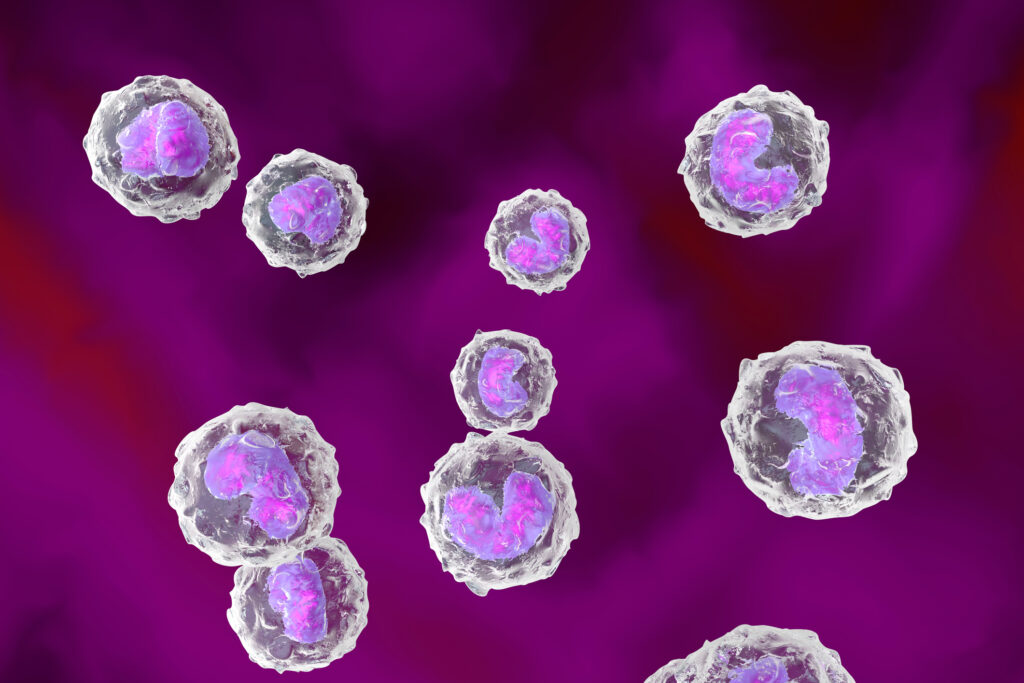
Credit: Westend61 / Getty Images
Systemic sclerosis (SSc) is a rare autoimmune disease that can harden the skin, impair blood flow, and damage internal organs such as the lungs and kidneys. But no two patients experience the disease in the same way. Some remain stable for years, while others develop life-threatening complications, including scleroderma renal crisis (SRC) and interstitial lung disease (ILD). The unpredictable nature of systemic sclerosis has long posed a challenge for clinicians and researchers alike.
From a study titled “Single-cell analysis reveals immune cell abnormalities underlying the clinical heterogeneity of patients with systemic sclerosis,” a research team led by scientists at Osaka University has taken a single-cell approach to understand why. Using high-dimensional single-cell RNA sequencing (scRNA-seq) and spatial transcriptomics, they uncovered distinct immune cell signatures that correlate with these severe organ-specific manifestations.
“We know that immune dysregulation causes vascular damage and tissue fibrosis in systemic sclerosis,” said Hiroshi Shimagami, lead author of the study. “However, it remains unclear why skin symptoms and the level of organ involvement differ from patient to patient.” Immune dysregulation is central to systemic sclerosis, but it’s been unclear why some patients develop severe lung or kidney damage while others do not.
The study, published in Nature Communications, pinpoints two specific immune cell subsets that may serve as both biomarkers and drivers of disease: EGR1⁺ CD14⁺ monocytes in the blood and kidneys of SRC patients, and CD8⁺ effector memory T cells bearing a type II interferon signature in those with ILD. The authors suggest that the chemokine-driven migration of these cells contributes to ILD progression.
The team performed single-cell profiling of peripheral blood mononuclear cells (PBMC) samples from 21 immunosuppressant-naïve systemic sclerosis patients. Transcriptome and surface protein data were integrated using Cellular Indexing of Transcriptomes and Epitopes by Sequencing (CITE-seq). In patients with SRC, they identified a distinct subset of CD14⁺ monocytes expressing EGR1, a transcription factor that activates inflammatory pathways and promotes tissue-damaging macrophage differentiation. These monocytes showed activation of the NF-κB pathway and surface expression of proteins associated with migration, such as CD11b and CD38.
To understand whether these circulating monocytes were contributing to kidney damage, the researchers performed spatial transcriptomics on kidney tissue from SRC patients. The EGR1⁺ monocytes appeared to differentiate into THBS1-expressing macrophages within the kidney, positioned at diseased loci near injured proximal tubule cells. These macrophages expressed genes involved in vascular damage and fibrosis, implicating them as active participants in tissue destruction.
“We identified a specific subset of immune cells, the EGR1-expressing subpopulation of CD14+ monocytes, that were clearly associated with scleroderma renal crisis, a serious kidney complication in patients with systemic sclerosis,” reported Masayuki Nishide, PhD, senior author.
In parallel, the team found that patients with progressive ILD had elevated levels of CD8⁺ effector memory T cells with a type II interferon-stimulated gene signature. These T cells expressed chemokine receptors CXCR3 and CCR5—markers of high tissue migratory capacity—and were also enriched in lung samples from patients with advanced SSc-ILD, suggesting a direct role in driving pulmonary inflammation and fibrosis.
These findings suggest that different immune cell subsets are responsible for distinct organ complications in systemic sclerosis. With few effective treatments currently available, the identification of immune signatures specific to SRC and ILD opens new avenues for early intervention. Beyond their diagnostic value, these cellular subsets may represent novel therapeutic targets for one of the most devastating manifestations of autoimmunity.


